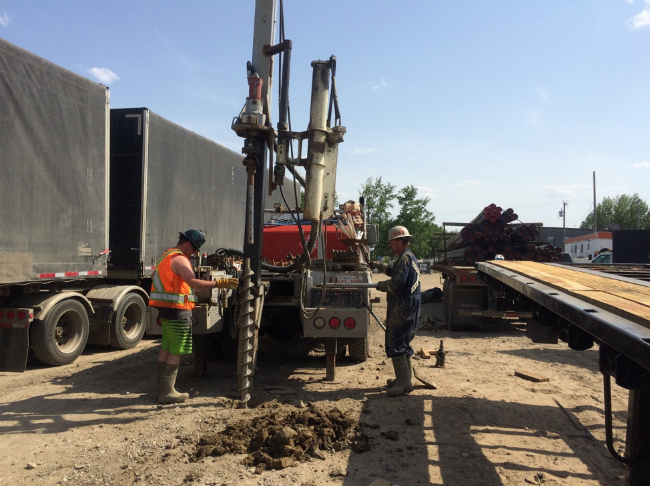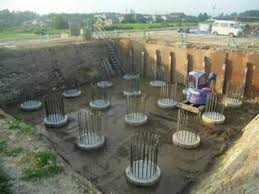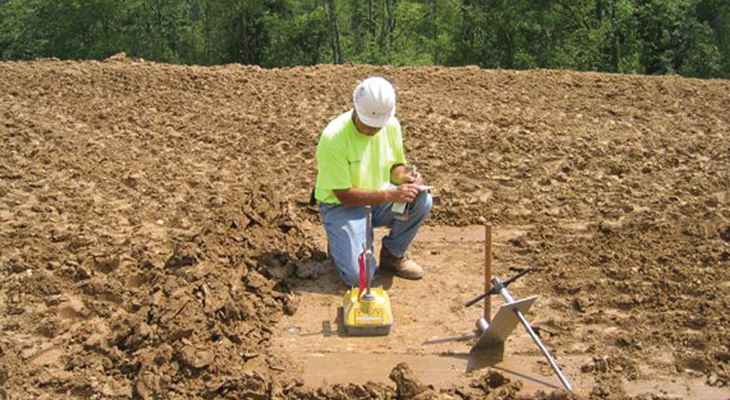Recognizing the Principles: Concerning Geotechnical Engineering in Modern Construction
Recognizing the Principles: Concerning Geotechnical Engineering in Modern Construction
Blog Article
The Significance of Geotechnical Design in Dealing With Environmental Obstacles and Enhancing Construction Safety
Geotechnical engineering offers as a keystone in the crossway of environmental stewardship and building and construction safety and security, offering critical understandings into the behavior of dirt and rock under various problems. This discipline not just addresses pushing environmental obstacles such as dirt erosion and groundwater security yet also boosts the toughness of infrastructure versus all-natural dangers. By applying tactical site investigations and customized mitigation measures, geotechnical engineers play a vital duty in guarding both human lives and eco-friendly integrity. Yet, the complexities of these challenges raise vital questions regarding the future direction of this field and its effects for sustainable advancement.

Function of Geotechnical Design
Geotechnical design plays an important function in the style and construction of infrastructure by addressing the actions of soil and rock products under various conditions. This area of design is crucial for comprehending the communication in between structures and the ground, which includes identifying the load-bearing capability of soil, assessing stability, and anticipating possible negotiation or failing.
Geotechnical designers are in charge of conducting site examinations, which entail tasting and screening soil and rock to collect information on their chemical and physical residential properties. This details is vital for making structures, retaining walls, and various other earth-retaining frameworks that ensure safety and durability. Geotechnical design educates the choice of suitable construction approaches and materials, therefore reducing risks linked with dirt behavior.
In addition, the combination of geotechnical engineering concepts right into city preparation and ecological administration is essential for attending to challenges such as ground contamination and groundwater administration. By recognizing geotechnical aspects, engineers can establish lasting remedies that enhance the strength of framework against all-natural dangers, while also advertising environmental stewardship. Inevitably, the function of geotechnical engineering is indispensable for achieving secure, sturdy, and ecologically mindful construction practices.
Dirt Erosion Mitigation
Dirt disintegration positions a considerable threat to both ecological security and infrastructure honesty, impacting roughly 24 billion lots of abundant dirt shed each year worldwide. This sensation is intensified by factors such as deforestation, urbanization, and bad agricultural practices. Geotechnical design plays a pivotal function in creating reliable dirt disintegration reduction approaches that guard both the setting and building and construction tasks.
One strategy entails the implementation of erosion control methods such as greenery planting, which supports dirt with origin systems. In addition, the construction of keeping terraces and walls can effectively lower surface overflow and safeguard at risk locations from erosion. Correct drainage layout is also critical; it reduces water build-up and routes excess runoff away from crucial structures.
Furthermore, geotechnical engineers utilize soil stabilization methods, such as the application of geotextiles and eco-friendly floor coverings, to boost dirt cohesion and prevent degradation - about geotechnical engineering. Regular monitoring and analysis of erosion-prone sites make it possible for timely treatments, making sure long-term sustainability. By incorporating these techniques, geotechnical design not only mitigates the influences of soil disintegration however additionally contributes to the strength of infrastructure versus environmental obstacles, eventually promoting a safer and a lot more sustainable built setting
Groundwater Defense Methods
Groundwater acts as an essential source for alcohol consumption water, farming, and industrial processes, making its protection essential for ecological sustainability and public health and wellness. Reliable groundwater security techniques are essential in mitigating contamination dangers and making certain the durability of this source.

Routine monitoring of groundwater quality is also vital, making it possible for very early detection of contamination resources and assisting in timely removal efforts. Utilizing advanced technologies, such as geophysical surveys and remote picking up, help in determining prospective hazards to groundwater gets.
Furthermore, public education and stakeholder interaction are essential, fostering neighborhood support for groundwater defense efforts. geotechnical specialist. By integrating regulatory procedures, technical developments, and area involvement, we can produce an extensive framework that safeguards groundwater sources while promoting lasting growth and building methods
Landslide Threat Monitoring
Landslides present considerable hazards to both human safety and security and facilities, making reliable danger management approaches essential. Geotechnical design plays an important role in determining, analyzing, and mitigating landslide threats. A comprehensive understanding of slope security, soil mechanics, and hydrology is essential for developing efficient risk monitoring plans.
The very first step in landslide threat monitoring includes extensive site examinations, that include geological mapping and dirt screening. These examinations assist engineers examine the possibility for landslides by identifying essential elements such as slope angles, dirt composition, and water material. Utilizing sophisticated technologies such as remote noticing and geophysical surveys can enhance the accuracy of these analyses.
Once risks are determined, appropriate mitigation steps can be carried out. These may include engineering remedies such as preserving wall surfaces, drainage systems, and slope stablizing strategies. In addition, keeping an eye on systems must be developed to spot signs of ground motion and modifications in water degrees, permitting positive interventions.

Enhancing Construction Safety And Security
Construction sites usually provide a myriad of dangers that can threaten worker safety and project integrity. Geotechnical engineering plays a vital duty in boosting building security by her comment is here providing important insights right into subsurface conditions. With thorough dirt and rock evaluation, geotechnical designers can identify potential dangers, such as soil instability, groundwater problems, and seismic susceptabilities, which may compromise the security of building and construction activities.
Implementing geotechnical services, such Go Here as appropriate foundation style and making use of keeping frameworks, minimizes these risks substantially. These solutions not only make certain the stability of the structures being constructed yet additionally produce a more secure working atmosphere for building and construction employees. In addition, rigorous tracking and analysis of website conditions throughout the building and construction procedure are vital. Using advanced innovations like ground-penetrating radar and inclinometer systems enables real-time data collection, permitting prompt interventions when risks are found.
Moreover, cultivating a culture of safety through training and adherence to developed safety and security methods further improves building website security. By integrating geotechnical competence into the preparation and implementation phases, building jobs can achieve greater safety and security standards, eventually shielding employees and guaranteeing successful project conclusion.
Verdict
Finally, geotechnical engineering acts as an important discipline in advertising and taking on environmental difficulties building and construction security. Through reliable dirt disintegration reduction, groundwater security techniques, and landslide risk monitoring, geotechnical engineers add to the growth of resistant facilities. The assimilation of these practices cultivates a more secure building setting and boosts the sustainability of civil design tasks. Ultimately, the know-how of geotechnical designers is crucial in securing both natural deposits and human lives against potential dangers.
Geotechnical engineering offers as a foundation in the junction of environmental stewardship and building and construction security, giving essential understandings right into the habits of soil and rock under numerous conditions. Geotechnical engineering educates the option of proper construction methods and products, consequently decreasing risks associated with soil behavior.
Geotechnical design plays a critical function in developing efficient dirt disintegration reduction approaches that protect both the atmosphere and construction jobs.
Additionally, geotechnical engineers use dirt stablizing methods, such as the application of geotextiles and biodegradable mats, to enhance soil communication and prevent deterioration. Via detailed soil and rock evaluation, geotechnical designers can recognize possible dangers, such as soil instability, groundwater her explanation problems, and seismic vulnerabilities, which might endanger the safety and security of construction activities.
Report this page